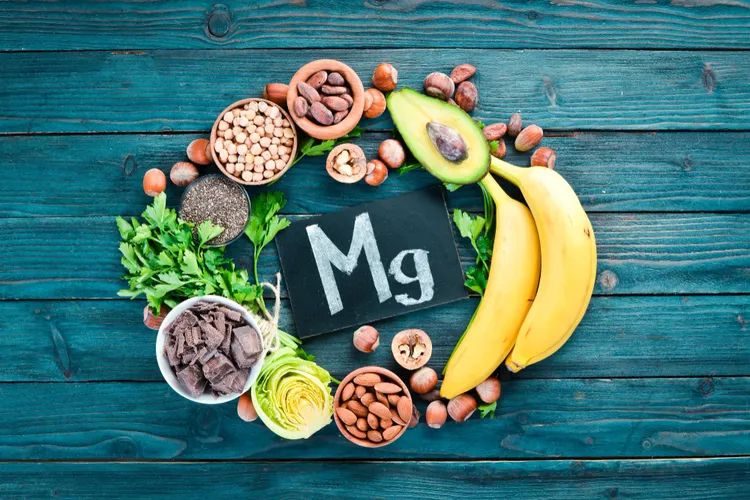The Power of Magnesium: Why You Need It & Best Foods to Eat
Magnesium is one of the most essential minerals in the human body, yet it’s often overlooked in favor of more commonly discussed nutrients like calcium, iron, or vitamin D. Despite its low profile, magnesium plays a critical role in hundreds of biochemical reactions that are vital for maintaining optimal health. In today’s fast-paced world, where stress, poor diet, and chronic health issues are increasingly common, understanding the importance of magnesium - and ensuring you get enough of it - can be a game changer for your well-being.

What Is Magnesium and Why Is It So Important?
Magnesium is a mineral found in the earth, sea, plants, animals, and humans. In the body, about 60% of magnesium is stored in the bones, while the rest is found in muscles, soft tissues, and fluids, including blood.
Here’s what magnesium does:
- Supports Muscle and Nerve Function: Magnesium helps regulate muscle contractions and nerve signals. It works with calcium to keep your muscles functioning properly - without enough magnesium, you may experience cramps, spasms, or muscle fatigue.
- Boosts Energy Production: It is a cofactor in ATP (adenosine triphosphate) production, which means it helps convert the food you eat into energy.
- Promotes a Healthy Heartbeat: Magnesium helps maintain a steady heartbeat and can prevent arrhythmias.
- Supports Mental Health: Low magnesium levels have been linked to an increased risk of depression, anxiety, and insomnia.
- Regulates Blood Sugar and Blood Pressure: It helps the body control blood sugar levels and contributes to healthy blood pressure.
- Strengthens Bones: Along with calcium and vitamin D, magnesium is essential for maintaining strong bones.
Signs You Might Be Deficient in Magnesium
Despite its importance, magnesium deficiency is surprisingly common, especially in Western countries where processed foods dominate the diet. Factors such as chronic stress, alcohol consumption, certain medications, and health conditions like diabetes can also deplete magnesium levels.
Common signs of deficiency include:
- Muscle cramps or spasms
- Fatigue or weakness
- Irritability or mood swings
- Sleep disturbances
- High blood pressure
- Irregular heartbeat
- Migraines or frequent headaches
- Anxiety or depression
If you suspect you might be low in magnesium, it's worth speaking to a healthcare provider. A blood test can measure serum magnesium levels, although this may not always reflect your total body magnesium, as most is stored in tissues and bones.
Top Magnesium-Rich Foods to Include in Your Diet
Fortunately, magnesium is widely available in a variety of delicious and healthy foods. Here are some of the best options to add to your daily meals:
1. Dark Leafy Greens
- Examples: Spinach, Swiss chard, kale, collard greens
- Magnesium per cup (cooked spinach): ~157 mg
- Why they're great: These greens are also rich in iron, calcium, and antioxidants. Easy to add to smoothies, soups, and stir-fries.
2. Nuts and Seeds
- Examples: Almonds, cashews, Brazil nuts, sunflower seeds, flaxseeds, chia seeds, pumpkin seeds
- Magnesium per ounce (pumpkin seeds): ~168 mg
- Why they're great: Perfect as a snack, in trail mix, or sprinkled over salads and yogurt.
3. Whole Grains
- Examples: Brown rice, quinoa, oats, whole wheat, bulgur, buckwheat
- Magnesium per cup (cooked quinoa): ~118 mg
- Why they're great: Complex carbs with fiber, protein, and essential minerals.
4. Dark Chocolate
- Choose varieties with at least 70% cocoa content
- Magnesium per ounce: ~64 mg
- Why it's great: Not only is dark chocolate a magnesium-rich treat, but it’s also full of antioxidants.
5. Avocados
- Magnesium per fruit: ~58 mg
- Why they're great: High in healthy fats, potassium, and fiber. A tasty addition to toast, salads, and smoothies.
6. Fatty Fish
- Examples: Mackerel, salmon, halibut
- Magnesium per 3 oz (mackerel): ~82 mg
- Why they're great: Also rich in omega-3 fatty acids and vitamin D.
7. Legumes
- Examples: Black beans, chickpeas, lentils, edamame, kidney beans
- Magnesium per cup (black beans): ~120 mg
- Why they're great: High in plant protein and fiber. Ideal for soups, stews, or grain bowls.
8. Dairy and Non-Dairy Alternatives
- Examples: Milk, yogurt, fortified plant-based milks
- Magnesium per cup (soy milk): ~61 mg
- Why they're great: Also provide calcium, protein, and vitamin D.
9. Fruits
- Examples: Bananas, figs, raspberries, dried apricots
- Magnesium per banana: ~32 mg
- Why they're great: Quick and portable sources of nutrition.
10. Potatoes (with skin)
- Magnesium per medium potato: ~43 mg
- Why they're great: An affordable staple with potassium, fiber, and magnesium.
Magnesium and Stress: A Two-Way Relationship
Stress depletes magnesium, and low magnesium makes you more susceptible to stress - a vicious cycle. Magnesium helps regulate the HPA axis (your stress-response system), supporting calmness, better sleep, and emotional stability.
Many people report improved mood and reduced anxiety when they increase their magnesium intake, especially through diet and supplements like magnesium glycinate or magnesium threonate (which crosses the blood-brain barrier effectively).
Why Magnesium Deserves Your Attention
In the modern world, magnesium is more important than ever. From regulating your heart rhythm to calming your nerves and improving sleep, magnesium is involved in nearly every aspect of health.
Rather than relying on quick fixes or isolated supplements, start with your plate. Building a magnesium-rich diet filled with whole foods not only supports your magnesium intake but also contributes to better overall nutrition, energy, and disease prevention.
Simple Takeaways:
- Magnesium is crucial for over 300 bodily processes.
- Many people don’t get enough due to poor diet and stress.
- Eat more leafy greens, nuts, seeds, whole grains, and legumes.
- Consider supplements only when needed and under professional guidance.
Start today: add a handful of almonds to your snack, toss spinach into your smoothie, or cook a hearty quinoa bowl with black beans and avocado. Your body - and mind - will thank you.
Check out our Magnesium Rich Recipes Collection for nourishing dishes packed with these powerhouse ingredients.









